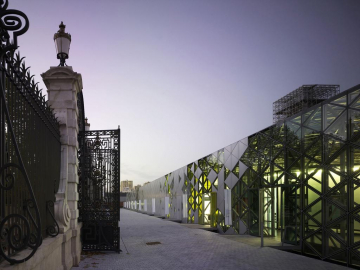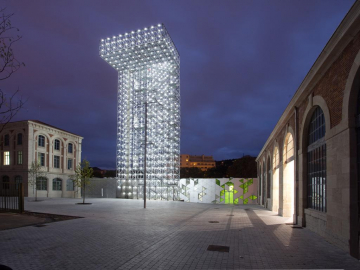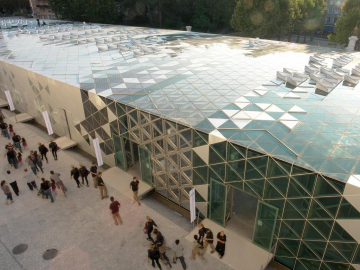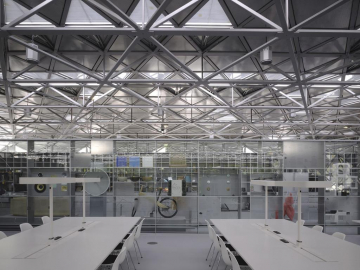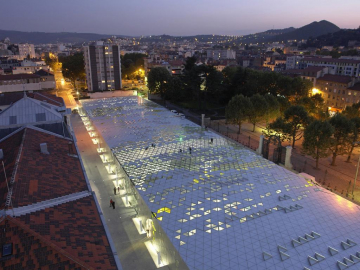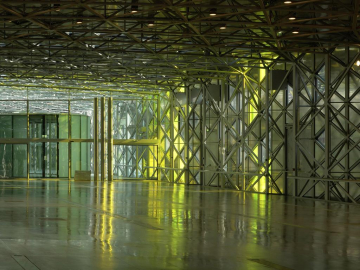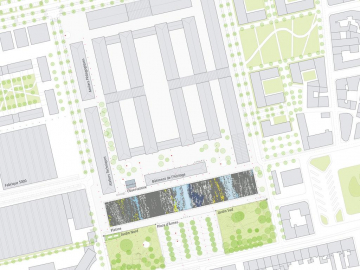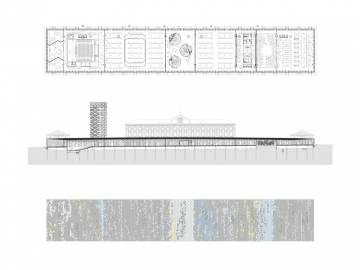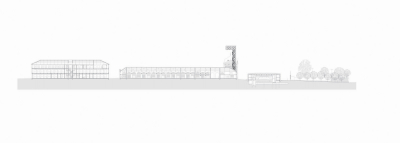Cite du Design
The Cite du Design is a new institution dedicated to design, located on the historical site of the National Arms Manufacture in St-Etienne. Formerly a very important industrial site in the city (18 ha), it had become a disused island. The Cite du Design breathes a new life to the place, reconnecting it to local and international networks of relationships.
The program of the Cite du Design combines communication, research and education. Its organization is not predetermined functions, activities are expected to emerge organically over time, shaping the site s spatial implementation.
The project is thus thought as an open network, of which buildings, gardens, courtyards and squares are the nodes. It consists in several renovated historical buildings, two gardens, a large public esplanade (the Place), a 31m high observation tower, and a slender building (200m x 32m), the PLATINE, designed as a place of merging and irrigation for the site, a connecting switchboard articulating the different activities in the Cite du Design.
It provides an open and continuous space for the common facilities of the Cite du Design, such as the Agora, the exhibition and seminary platforms, an auditorium, a greenhouse and a media and material library. It is a laboratory that handles interior climate through the responsiveness of its skin.
The envelope consists of 14,000 equilateral triangles of 1.20 m per side. It is graduated and reactive: modulation between opaque and clear, insulated, open or closed reflects and follows the various cycles and interactions of the Cite du design. The panels characteristics (light filtering, energy production, and air and heat regulation) are combined in order to achieve differentiated atmospheres and performances within the PLATINE. They integrate solar modules - photovoltaic but also more experimental photosynthesis cells. Under the PLATINE a geothermal energy system is implemented, via thermal activation of foundation piles, use of Canadian well for pre-conditioning of fresh air and air exchanges between zones to reduce energy consumption. These combined strategies allow the PLATINE to adapt to the changing needs or technologies, while at the same time make it tend to energy independence.

